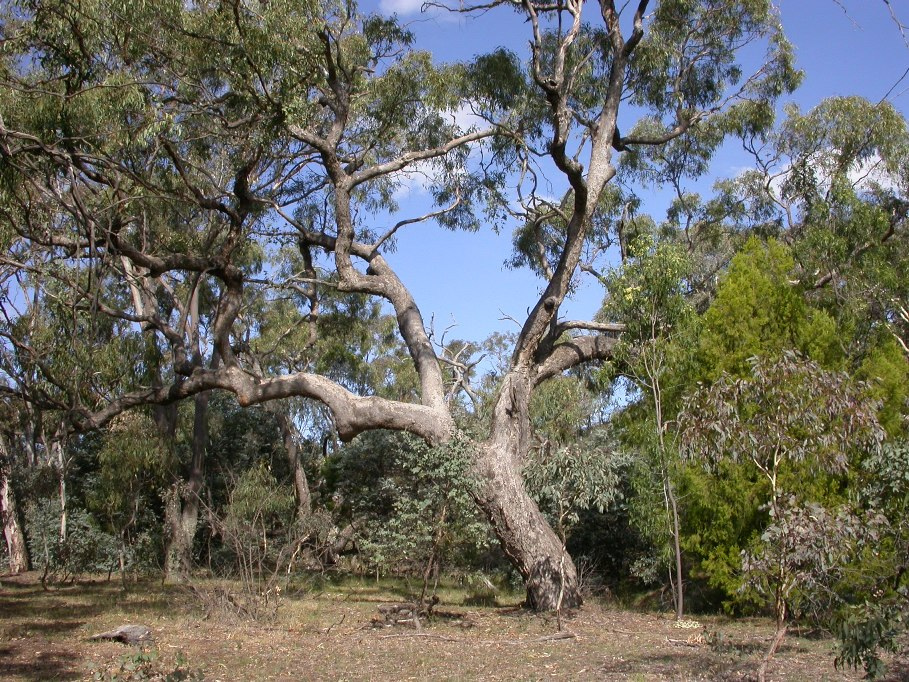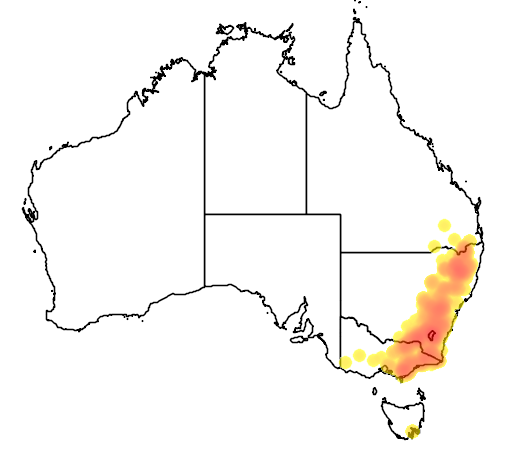Description
Common names
Apple Box, But But, Apple, Apple Gum, Applebox, Moonbi Apple Box, Mt Canobolas Box, Swamp Apple.
Scientific names
Eucalyptus bridgesiana.
Family
Myrtaceae.
Genus
Eucalyptus.
Name origin
Bridgesiana, after F. Bridges, the Chief Inspector of Education in NSW during the nineteenth century. The common name refers to its similarity to the Rough-barked Apple (Angophora floribunda).
Rainfall
500-1000mm.
Growth rate
Moderate.
Growth height
Up to 20m.
Presence in Australia
Widespread, in most areas on drier flats and lower slopes. Found in hills of higher rainfall areas.
This specie has been identified in the following Australian states: Qld, NSW, ACT, Vic, Tas.
Habitat
Grassy woodland on drier sites, often shallower soils on slopes, and creeklines in lower rainfall areas.
Habit
Tree to 20m high with fibrous-flaky bark persistent on trunk and larger branches. Large crown of heavy green semi-glossy leaves.
Similar species
Distinguished from Long-leaf Box (E. goniocalyx) and Silver Bundy (E. nortonii) by its fruit, which are smaller and not as "blocky", its habit and habitat.
Site preference
Well-drained heavy soils. Tolerates moderate frost and drought.
Characteristics
Moderate growth rate.
Flowering
White, late summer-autumn. Regular and profuse. Buds appear in summer and are carried for about a year.
Seed collection
Generally winter-spring. Monitor seed-bearing capsules. Store seeds at room temperature.
Propagation
From seed (±366 viable seeds per gram). 250C is optimum germination temperature.
Regeneration
Regenerates well from seed. Can regenerate in weedy areas or those dominated by competitive exotic grasses.
Shade and shelter
Useful medium-level cover in windbreaks. Excellent shade due to large spreading crown. Seems to tolerate pressure from stock camps compacting the soil and raising soil fertility. Nonetheless, fencing recommended to preserve trees and encourage regeneration.
Land protection
Useful in gully erosion control as back-up to fibrous-rooted understorey shrubs.
Fuel
Burns readily, but generally not regarded highly as fuel.
Timber
Too soft and brittle to be useful.
Wildlife
Excellent habitat. Flowers a food source for many insects, which attract insect-eating birds. Good nectar flows, favoured by bees. Yellow-bellied Gliders occasionally gouge through bark on trunk to obtain sap, and search for large wood-boring insect larvae. Squirrel Gliders and Sugar Gliders may obtain sap and insect larvae. Wombats occasionally dig down and chew roots. Refuge and nesting sites for many hollow-dependent birds and mammals.
Ornamental
Ornamental for larger gardens and parks, particularly in juvenile foliage stage.
Other
Leaves produce red dye with alum as mordant.


